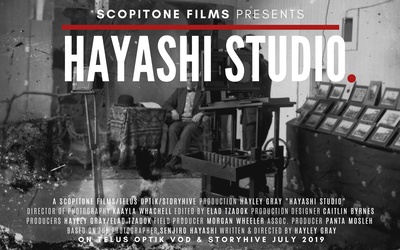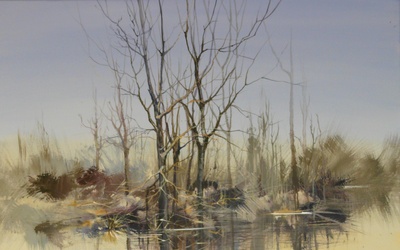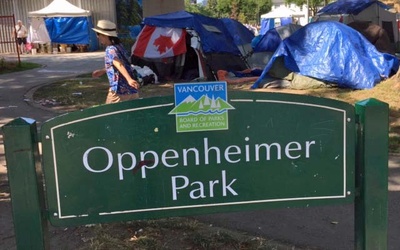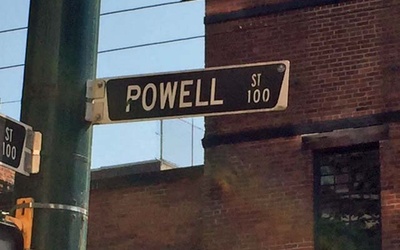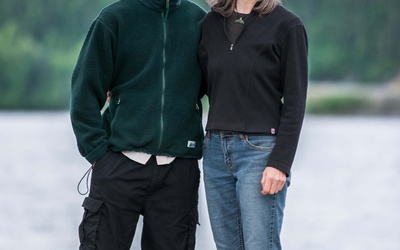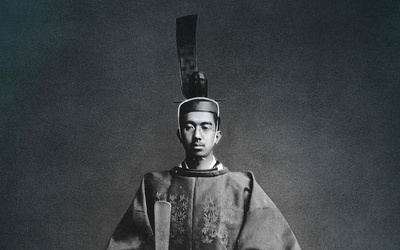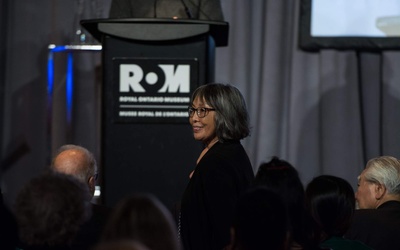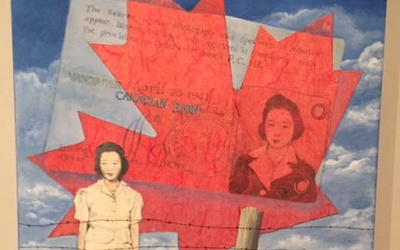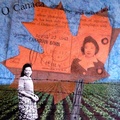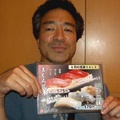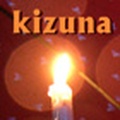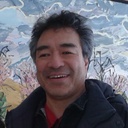
Norm Masaji Ibuki
@MasajiWriter Norm Masaji Ibuki lives in Oakville, Ontario. He has written extensively about the Canadian Nikkei community since the early 1990s. He wrote a monthly series of articles (1995-2004) for the Nikkei Voice newspaper (Toronto) which chronicled his experiences while in Sendai, Japan. Norm now teaches elementary school and continues to write for various publications.
Updated August 2014
Stories from This Author
Hayashi Studio of Cumberland, BC: A Documentary by Hayley Gray
April 27, 2020 • Norm Masaji Ibuki
“Close to 800 dry glass negatives abandoned by the Matsubuchi studio reappeared in the mid-1980s in garage sales, and were recognized and collected by Cumberland residents, Mr. Frank Kothlow, Mrs. Flowers and Jim Small. Thanks to the foresight of Dale Reeves, the former director of the Cumberland Museum, the prints from these negatives are now located in the Museum’s Archives as a research collection,” taken from Shashin: Japanese Canadian Photography to 1942 exhibition catalogue, Grace Eiko Thomson, Japanese Canadian National …
Nishimura Sisters: Before, During, and After Tashme - Part 2
March 27, 2020 • Norm Masaji Ibuki
Read Part 1 >> YELLOW CHERRIES/YELLOW PERIL?! I am intrigued by the story of post-internment Ontario Japanese Canadian (JC) history in the booklet you wrote. This is a story that isn’t often heard about. MBG (Miiko Barbara Gravlin): I originally conceived of a child’s storybook based on my carefree experiences in Cedar Springs, Ontario. My childhood on the second farm was mainly happy, full of wide-eyed wonder and curiosity. I grew up reading Dick and Jane, their dog Spot, kids …
Nishimura Sisters: Before, During, and After Tashme - Part 1
March 26, 2020 • Norm Masaji Ibuki
“The exhibition title evolved from Sisters to Tashme Sisters because both of them began belated examinations of their origins in an internment camp and the significance of their upbringing in a post-war JC family. However, with the exception of a couple of paintings Barb produced for this exhibition, there is no evidence of this background in their bodies of work. For me, this exclusion deepens the fascination with the richly dissimilar paintings they make.” — Bryce Kanbara, Tashme Sisters exhibition …
Vancouver’s 1907 Anti-Asian Riots Revisited - Part 2
Dec. 31, 2019 • Norm Masaji Ibuki
Read Part 1 >> For those who may not be familiar with it, can you give a summary of the events leading up to the 1907 Riot? What happened and what was the aftermath? Didn’t things get worse after that for Asians? What about the racists? The 360 Video Walking Tour of the 1907 Anti-Asian Riots traces the history and route of the mob that attacked the Chinese Canadian and Japanese Canadian communities following the demonstration and parade organized by …
Vancouver’s 1907 Anti-Asian Riots Revisited - Part 1
Dec. 30, 2019 • Norm Masaji Ibuki
“Nothing could be more systematic than the determination with which the mob picked out Japanese and Chinese windows and spared those right adjoining if they were those of whites. On Columbia Avenue, for example, all the Chinese windows were broken and those of two white real estate brokers were left whole.” — The Vancouver Daily World newspaper reporting about the Powell Street Riot in 1907 Prior to making my first visit to the Powell Street Festival in August, I noticed …
David Hayashida on his first visit to BC, euphemisms and life on "The Rock" - Part 2
Sept. 24, 2019 • Norm Masaji Ibuki
Read Part 1 >> Can you talk about how your career as an artist began? I am turning 60 this year and it is my first piece on JCs. If Dr. Heather Read had not very kindly invited me to turn my decades old idea into reality, it might never have existed outside of my head. Also, my younger sister Charissa Alain Lilly (also an artist) just passed away and that difficult event has in many ways pushed me to …
David Hayashida on his first visit to BC, euphemisms and life on "The Rock" - Part 1
Sept. 23, 2019 • Norm Masaji Ibuki
I caught up with Newfoundland artist David Hayashida on his return home after returning from the BC Internment Camp tour in July. Like me, he grew up in Ontario far removed from most Japanese Canadians. We were often the only Asians in our schools. And as inheritors of the internment and the Redress legacy, we have spent much of our adult lives figuring out how to become valued members of our mostly-white communities where we grew up clinging on to …
A Book Review - The Emperor's Orphans by Winnipeg's Sally Ito
Sept. 5, 2019 • Norm Masaji Ibuki
“Going from being the ‘Jap’ in one country (Canada) to the ‘Yankee’ in another (Japan) must not have been pleasant. No matter where they went the Ito family felt like perpetual outsiders,” Winnipeg author Sally Ito, describing the experience of her ‘repat’ uncle to Japan where he faced discrimination of a different sort. Let’s face it, the effort to ‘discover oneself’ is complicated even at the best of times. Truly, the untangling of DNA strands don’t begin to tell the …
Marjene Matsunaga Turnbull: How-to-Bake a Japanese Canadian Cake
Aug. 12, 2019 • Norm Masaji Ibuki
Here’s an intriguing idea about how to think about your Japanese Canadian identity: What if it were a cake recipe what would go into it and how would you construct or, perhaps, more aptly, deconstruct, it? De/constructing my own Japanese Canadian identity over the years, I’ve learned that the foundation of the Japanese part of my cultural shaping would include the food, my awkward way of interacting with others (especially in Japanese), Buddhism, aikido, how history has twisted and bent …
A journey of becoming ... with Toronto’s Lillian Michiko Blakey - Part 2
Aug. 1, 2019 • Norm Masaji Ibuki
The continuation of Lillian Michiko Blakey's story. Read Part One >> Right after the craft show, I got busy with my first real art piece. I am still mystified as to why I chose to create a nonrepresentational piece of art. “White Night” was an abstract landscape completely created in varying tones of point fabric. Upon reflection today, I find myself thinking this is an odd way of representing night. The other strange thing is that abstract expressionism of the 60s …

